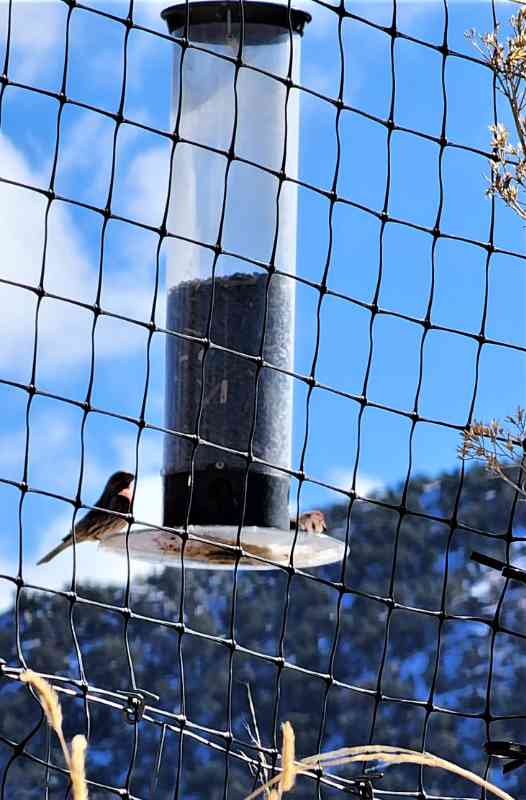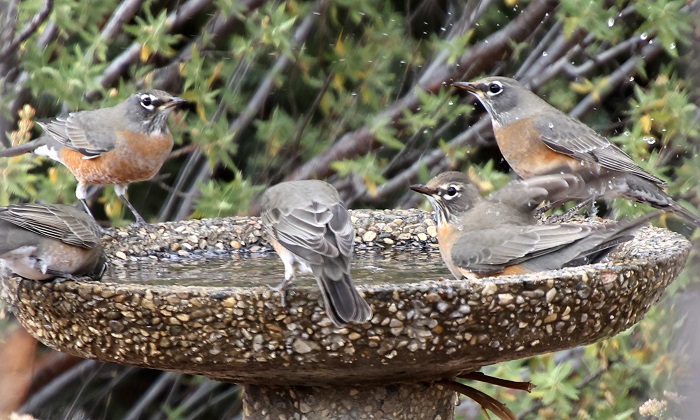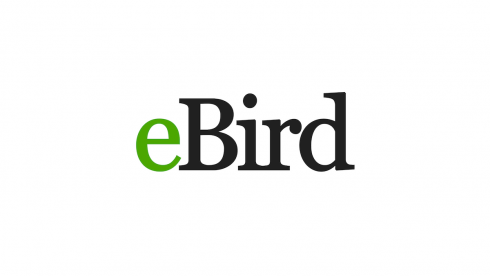By Christie Collins
We introduced a new monthly program in November 2022. Once a month we offer guided birding walks through the Botanical Garden for pre-registered participants. There were many reasons why we wanted to offer a birding program at a botanical garden.
First, for someone who is still relatively new to New Mexico, I admit that I wanted a reason to learn about the local birds and the species that are common to the Garden. Enlisting the help of knowledgeable volunteers, each month we have a different birding expert leading the walks. These particular people know their stuff! They can tell a bird species by the song, the flash of a tail feather and a subtle silhouette sitting atop a tree. My goal is to learn one new bird a month and so far I’m on track, but I digress.
Another reason to offer birding walks, we realize that visitors not only want to know about the plants but also about the animals they are seeing and hearing around them. In order to educate our visitors, we have to actively monitor what is going on in the Garden.
 Finally, to have a healthy garden, it’s important to have diversity. Not just a diverse selection of plants but a diverse population of animals that visit a garden. After all, our plants are pollinated and dispersed by a variety of animals. We’ve began focusing on invertebrate pollinators more, but we also needed to pay an equal amount of attention to the feathered variety.
Finally, to have a healthy garden, it’s important to have diversity. Not just a diverse selection of plants but a diverse population of animals that visit a garden. After all, our plants are pollinated and dispersed by a variety of animals. We’ve began focusing on invertebrate pollinators more, but we also needed to pay an equal amount of attention to the feathered variety.
During the summer and fall we keep hummingbird feeders up throughout the Garden. Last year, nine nesting bird boxes were added to the Pinon-Juniper Woodland, five of which were nested in this year! This fall we added 4 bird feeders and an additional bird bath. The feeders will stay up through the winter to a) help feed hungry, cold birds and b) to gain favor with the birds in hopes that the Garden is a new favorite spot.

Photo by Toby Kessler, SFBG Master Naturalist.
During our very first bird walk we saw and heard eleven different bird species. Several were residents who overwinter in the area, and some were visitors who travel south. We documented:
- house finch (Haemorhous mexicanus)
- Woodhouse’s scrub jay (Aphelocoma woodhouseii)
- American robin (Turdus migratorius)
- northern flicker (Colaptes auratus)
- mountain chickadee (Poecile gambeli)
- juniper titmouse (Baeolophus ridgwayi)
- Townsend’s solitaire (Myadestes townsendi)
- canyon towhee (Melozone fusca)
- Cassin’s finch (Haemorhous cassinii)
- spotted towhee (Pipilo maculatus)
- AND cedar waxwing (Bombycilla cedrorum)!
During December’s walk, we saw many of the same birds who are year-round residents. Our next birding walk is Saturday, January 21st, 2023, at 10am (coincidentally this date is also National Squirrel Appreciation Day!).
We hope you will join us, snow or shine, to observe the birds and enjoy some fresh, crisp air along with the beautiful sights and songs of the birds who visit the Garden.
Add your sightings to Cornell Lab of Ornithology’s eBird project! Santa Fe Botanical Garden is a “hotspot” (public birding location with combined results) and you can see a checklist of all the species observed and add yours when you visit. Check out the Santa Fe Botanical Garden eBird hotspot!




